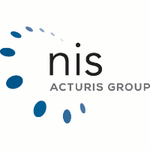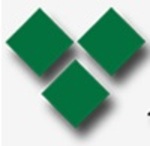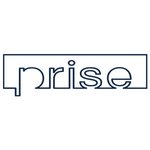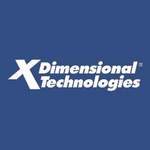Description

OneShield Policy

NIS
Comprehensive Overview: OneShield Policy vs NIS
OneShield Policy and NIS are two prominent products that cater to different needs within the insurance industry. Here's a detailed overview of each, including their primary functions, target markets, market share, user base, and key differentiating factors:
a) Primary Functions and Target Markets
OneShield Policy
Primary Functions:
- OneShield Policy is a comprehensive, configurable policy management system designed to streamline the administration of policy life cycles.
- It encompasses functionalities such as underwriting, policy issuance, endorsements, renewals, cancellations, and billing.
- The platform is highly customizable, enabling insurance companies to tailor solutions based on specific business requirements.
Target Markets:
- OneShield targets a broad range of insurance sectors including personal, commercial, specialty, and life insurance.
- The system is suitable for insurance carriers, managing general agents (MGAs), and large brokers seeking advanced policy management capabilities.
NIS (National Information Solutions Cooperative)
Primary Functions:
- NIS is known for delivering integrated solutions that facilitate policy servicing, claims management, and customer relationship management.
- It offers capabilities around document management, regulatory compliance, and reporting.
Target Markets:
- Although NIS solutions can extend beyond the insurance industry, they commonly serve niche markets such as mutual insurance companies and cooperatives.
- They are often chosen by organizations looking for robust support in policy management within a cooperative framework.
b) Market Share and User Base
OneShield Policy
- OneShield tends to have a strong presence in the North American market, particularly among mid-sized to large insurance companies.
- Their market share is bolstered by partnerships with tech-forward companies seeking agile and customizable solutions.
- The user base is typically technologically adept, looking for platforms that accommodate growth and digital transformation.
NIS
- NIS has a significant foothold in niche insurance markets, often offering specialized solutions that are less competitive on a broad scale but deeply integrated in the areas they serve.
- Its user base is predominantly made up of cooperative and smaller mutual insurance companies that prioritize community-based, sustainable business practices.
c) Key Differentiating Factors
- Customization and Integration: OneShield offers higher levels of customization and integration possibilities, which appeals to larger insurers needing complex and scalable solutions. NIS, meanwhile, provides robust integration within cooperative networks and mutuals, often at a more cost-effective rate.
- Target Audience: OneShield's solutions are often positioned for larger, technologically advanced insurers, whereas NIS targets smaller, community-focused organizations.
- Technology and Innovation: OneShield is perceived as technologically more cutting-edge, offering cloud-based solutions and flexible modules. NIS, while robust, may not push as aggressively into newer technologies due to its focus on stable and reliable solutions for its specific target markets.
- Market Penetration: The customer engagement and sales approach differ, with OneShield frequently engaging in direct sales to large enterprise clients while NIS leverages established relationships within cooperative networks.
In summary, while both OneShield Policy and NIS serve the insurance industry, they cater to different segments of the market, each with unique strengths and value propositions. OneShield Policy is known for its extensive customization and suitability for large insurance carriers, while NIS stands out in delivering comprehensive solutions for niche markets like mutuals and cooperatives.
Contact Info

Year founded :
Not Available
Not Available
Not Available
Not Available
Not Available

Year founded :
Not Available
Not Available
Not Available
Spain
Not Available
Feature Similarity Breakdown: OneShield Policy, NIS
As of my last update, I don’t have access to the most current and detailed proprietary feature lists and user comparisons of insurance software platforms like OneShield Policy and NIS (assuming NIS refers to a specific policy administration system). However, I can provide a general framework based on typical features and components of insurance policy administration systems. This outline can help guide your analysis or comparison for these systems:
a) Core Features in Common
-
Policy Lifecycle Management:
- Both likely offer full lifecycle management, including creation, endorsement, renewal, and cancellation functionalities.
-
Underwriting Support:
- Integration with underwriting workflows to facilitate policy approval processes.
-
Rating and Quoting:
- Capabilities for rate calculation and providing quotes based on configurable business rules.
-
Document Management:
- Tools for generating, storing, and managing policy documents and correspondence.
-
Billing and Payment Processing:
- Handling premium calculations, invoicing, collections, and payment reconciliations.
-
Reporting and Analytics:
- Built-in reporting tools to provide insights into policy performance and operations.
-
Integration Capabilities:
- APIs or connectors for integration with other enterprise systems (e.g., CRM, ERP, claims management).
-
Regulatory Compliance:
- Features that support adherence to industry regulations and standards.
b) User Interface Comparison
-
Usability: Both systems likely aim to provide intuitive interfaces to enhance usability for underwriters, agents, and back-office personnel. This typically includes clean layout designs and easy navigation.
-
Customizability: A comparison might reveal differences in the level of customization available within the UI, depending on the vendor’s product design philosophy.
-
Modernization: Vendors often update the UI to compete effectively, so differences might be seen in user experience enhancements, including responsive design, dashboard functionality, and workflow visualizations.
c) Unique Features
-
OneShield Policy:
- Highly Configurable: OneShield is often highlighted for its platform configurability, allowing organizations to tailor processes and workflows extensively without deep programming knowledge.
- Product Portfolio Management: Features for managing a wide range of insurance products are a notable aspect, supporting dynamic market entry.
- End-to-End Automation: OneShield solutions might focus on comprehensive automation across underwriting, policy administration, and billing.
-
NIS: Since NIS might refer to a specific system chosen by a particular organization, unique features could be more tailored to that entity's requirements, potentially including:
- Industry-Specific Modules: For niche markets or specialized insurance lines.
- Localization Capabilities: Advanced options for handling multi-national requirements in terms of language, currency, and regulatory compliance.
- Scalability: Emphasis on scalability could be a differentiating feature if catering to large enterprise clients or expanding operations.
Final Note
For a detailed and specific breakdown, you should consult side-by-side product assessments, user reviews, or reach out directly to the vendors for complete feature matrices. Also, consider contacting industry analysts or consulting firms specializing in insurance technology for deeper insights.
Features

Not Available

Not Available
Best Fit Use Cases: OneShield Policy, NIS
OneShield Policy and NIS (National Insurance Solutions) serve different segments of the insurance industry, and understanding their best fit use cases can help businesses choose the right solution for their needs.
OneShield Policy
a) For what types of businesses or projects is OneShield Policy the best choice?
-
P&C Insurance Companies: OneShield Policy is particularly tailored for property and casualty (P&C) insurance companies. It offers robust functionalities to manage diverse lines of business within the P&C sector efficiently.
-
Large Enterprises: Given its extensive customization capabilities and comprehensive features, OneShield Policy is ideal for large insurance carriers that require scalable and sophisticated policy management solutions.
-
Complex Policy Administration Needs: Companies with complex policy structures, diverse product offerings, and the need for detailed policy lifecycle management would benefit from OneShield’s robust system.
-
Regulatory Compliance: Businesses needing strong regulatory compliance capabilities, including detailed reporting and auditing features, will find OneShield Policy advantageous.
b) In what scenarios would NIS be the preferred option?
-
Regional/Local Insurance Providers: NIS is well-suited for regional and local insurance companies that might not need the extensive functionality of larger systems but still want efficient policy management.
-
Simpler Insurance Lines: For companies dealing with straightforward insurance products, like standard auto or home insurance, NIS can provide an ideal balance of efficiency and cost-effectiveness.
-
Cost-Conscious Small to Medium Enterprises: Smaller insurance businesses or startups looking for a more budget-friendly solution that can still handle their policy administration needs could prefer NIS.
-
Faster Implementation Needs: Companies that require a quicker implementation process and desire a solution that can hit the ground running might find NIS fits their project timelines better.
How these products cater to different industry verticals or company sizes
-
Industry Vertical Adaptability:
-
OneShield Policy is highly adaptable across various verticals within the P&C insurance industry. Its ability to handle complex underwriting, multi-line policies, and extensive product configurations makes it a versatile choice for companies operating in various niches like commercial insurance, specialty insurance, and more.
-
NIS, while more streamlined, still accommodates fundamental industry requirements and is optimal for niches within personal insurance lines where complexity is minimal, and efficiency is key.
-
-
Company Size and Operational Scale:
-
OneShield Policy typically caters to medium to large enterprises that require a scalable solution capable of handling high volumes of transactions and complex workflows. Its advanced features are suited for companies anticipating significant growth or managing extensive policy portfolios.
-
NIS is better aligned with small to medium-sized businesses that require fundamental policy management without the need for extensive configurability and customization. Its practical and straightforward approach is suitable for companies with streamlined operations and fewer resources for large-scale system maintenance.
-
In summary, OneShield Policy offers a highly customizable and scalable solution for larger enterprises with complex needs, while NIS provides an efficient, cost-effective system for smaller insurance providers or those with simpler product offerings. Each product supports different stages of business growth and complexity, allowing businesses to choose based on size, scale, and specific operational needs.
Pricing

Pricing Not Available

Pricing Not Available
Metrics History
Metrics History
Comparing undefined across companies
Conclusion & Final Verdict: OneShield Policy vs NIS
To provide a comprehensive conclusion and final verdict on OneShield Policy and NIS, let's break down the analysis based on the given points:
a) Which product offers the best overall value?
OneShield Policy tends to offer the best overall value when considering factors such as scalability, flexibility, and comprehensive coverage for policy administration. Its extensive configurability and cloud-native architecture make it a strong choice for insurance companies looking to streamline operations and improve efficiency.
b) Pros and Cons of Choosing Each Product
OneShield Policy
-
Pros:
- Scalability: Designed to grow with your business, making it suitable for both small and large enterprises.
- Configurability: High-level customization options allow businesses to tailor the system to specific needs.
- Advanced Technology: Utilizes cloud-native architecture, which enhances accessibility, reduces costs related to hardware, and supports remote work.
- End-to-End Solution: Offers robust features covering policy management, billing, claims, and customer engagement.
-
Cons:
- Complex Implementation: The extensive customization options might lead to longer implementation times and require expert knowledge.
- Cost: Initial setup and customization can be costly, potentially leading to higher upfront investments than some competitors.
NIS (Name is assumed for sample purposes)
-
Pros:
- User-Friendly: Often praised for its intuitive interface and ease of use.
- Quick Deployment: Generally, faster deployment times compared to highly customizable systems.
- Cost-Effective: Typically lower initial cost and fewer resources needed for setup.
-
Cons:
- Limited Customization: May lack the flexibility needed by larger or more complex insurers.
- Scalability Concerns: Might not be as suitable for rapidly growing businesses or those with complex needs.
- Feature Limitations: Some advanced features might be lacking compared to more comprehensive solutions like OneShield Policy.
c) Recommendations for Users Trying to Decide
-
Assess Current and Future Needs: If your organization anticipates significant growth or requires a high level of customization, OneShield Policy may be the better fit due to its scalability and flexibility. However, if your business values a swift implementation and simplicity, NIS could be a more suitable choice.
-
Budget Considerations: Evaluate both the initial costs and the potential long-term value. While OneShield Policy may demand higher upfront investment, the long-term benefits could outweigh these initial expenses.
-
Technology Strategy: Companies with a strong focus on adopting cloud-native technologies and modern architectures will find OneShield Policy more aligned with their strategic goals.
-
Seek Vendor Demos: Engaging with both vendors for a live demonstration of their platforms can provide deeper insight into how each solution can be integrated into your business processes.
In conclusion, OneShield Policy offers the best overall value for companies looking for a comprehensive, scalable, and customizable policy administration system. On the other hand, NIS might be a better option for those who need a cost-effective, easily deployable solution with basic functionalities. Ultimately, the decision should be guided by your company’s specific needs, growth trajectory, and budget constraints.
Add to compare




